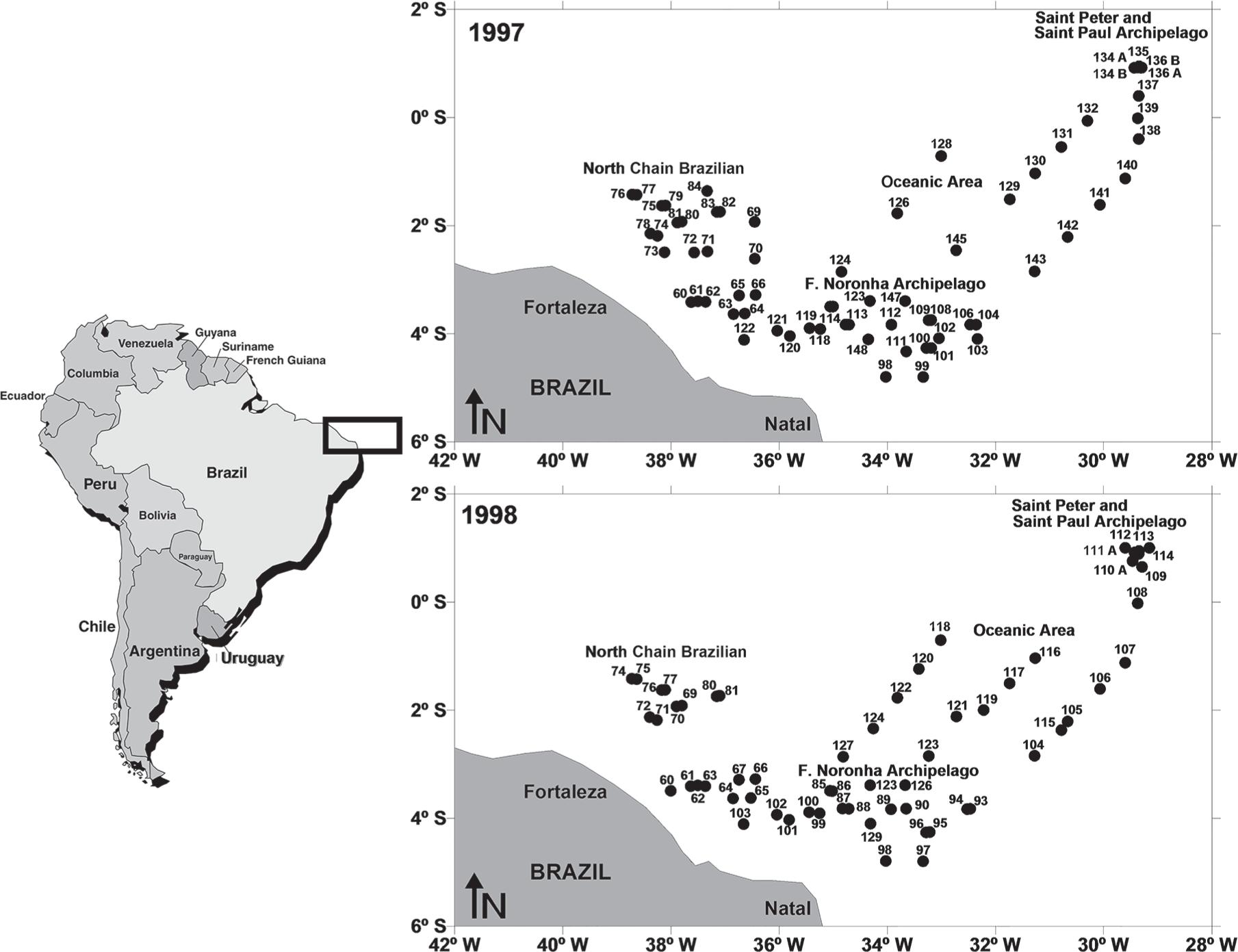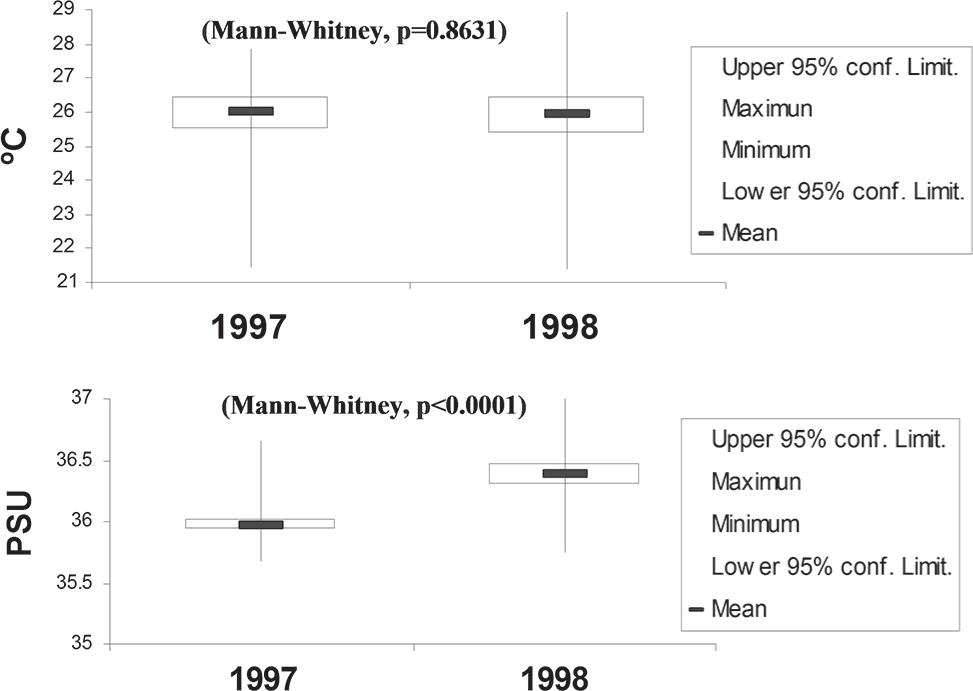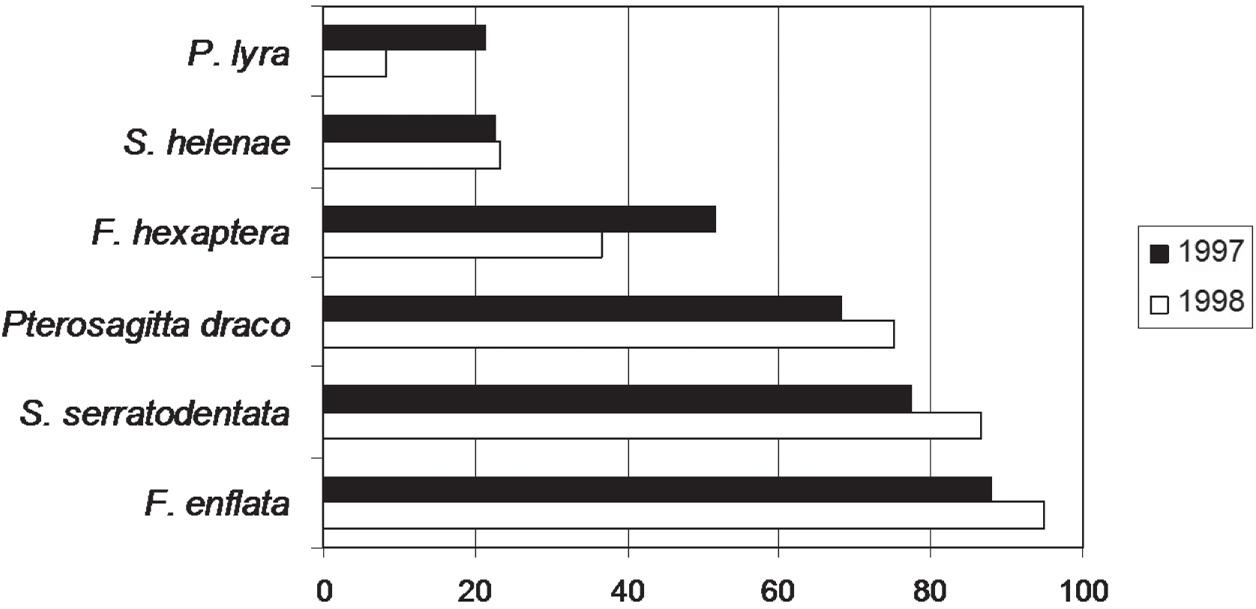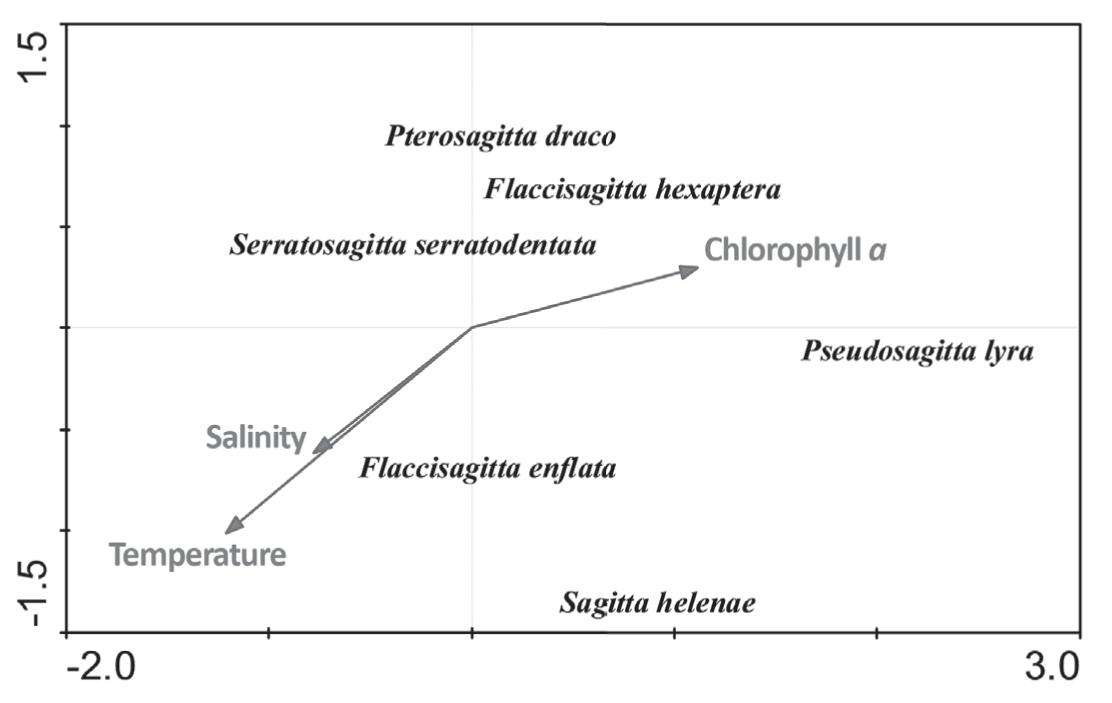Relationship between spatial distribution of chaetognaths and hydrographic conditions around seamounts and islands off Northeastern Brazil were analyzed from 133 oceanographic stations during the months of January – April of 1997 and April – July of 1998. Oblique zooplankton tows, using 50 cm diameter Bongo nets with 500µm mesh with a flowmeter to determine the filtered volume, were carried out to a maximum of 200m depth. The Superficial Equatorial Water, which had a salinity > 36 PSU and temperature > 20°C, occupied the top 80 to 200m depth. Below this water mass was the South Atlantic Central Water with salinity ranging from 34.5 to 36 PSU and temperature from 6 to 20°C. The community of chaetognaths showed six species: Pterosagitta draco, Flaccisagitta enflata, Flaccisagitta hexaptera, Pseudosagitta lyra, Serratosagitta serratodentata, and Sagitta helenae. Of these species, F. enflata was the most abundant (32.05% in 1997 and 42.18% in 1998) and the most frequent (87.88% in 1997 and 95% in 1998) during both periods. A mesopelagic specie was identified (P. lyra). This specie was more abundant in 1997 (3.42%), when the upwelling was more intense. P. lyra occurred in 22% of the samples during 1997. The abundance of F. enflata, an epiplanktonic species, increased, associated with greater water-column stability.
northeastern Brazil; seamounts; spatial distribution; variability; zooplankton










